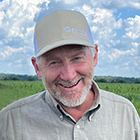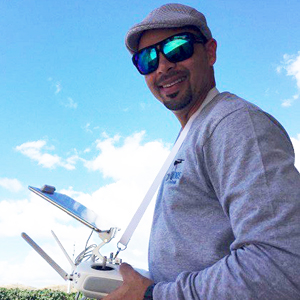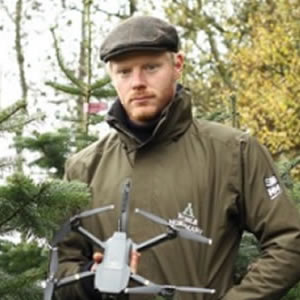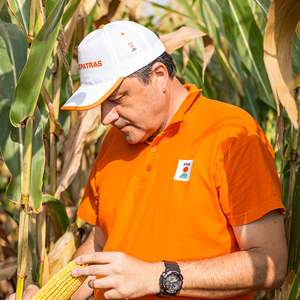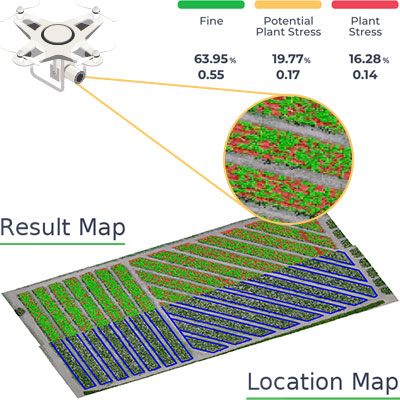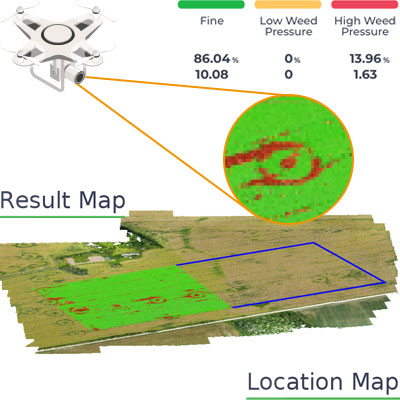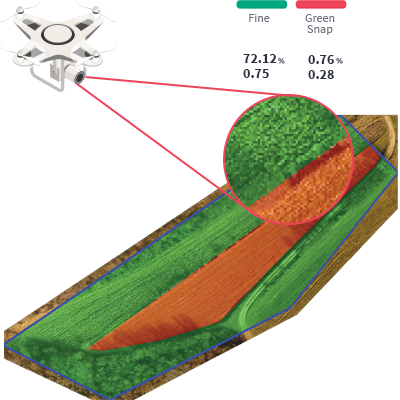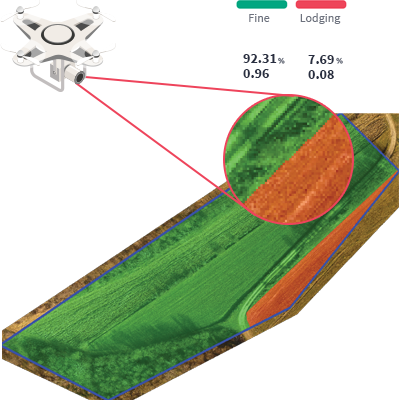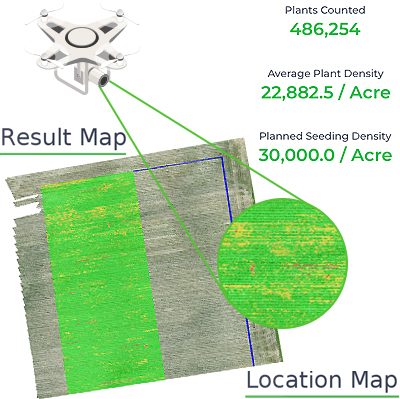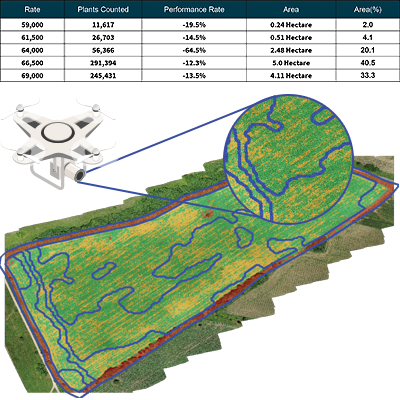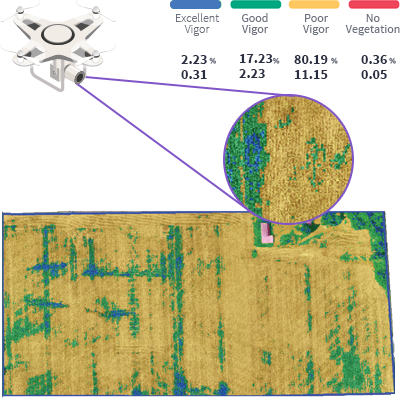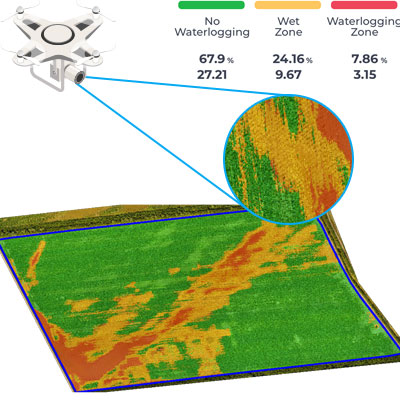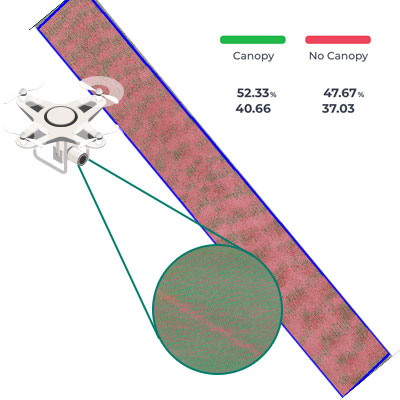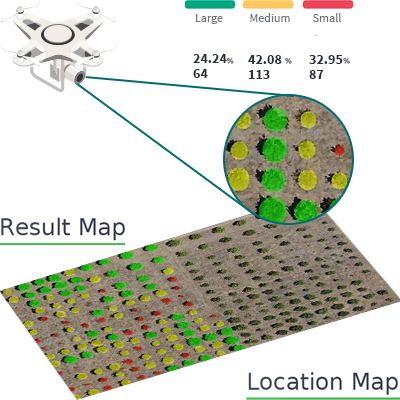One of the leading raw materials for the production of manufactured sugar, a well-established crop in the American Midwest, sugar beet, is planted in the early spring and harvested in late September and October. Sugar beet yields tend to be higher in the Far West, but production costs tend to be higher as well.
USDA estimates that 1.12 million acres of sugar beet was planted in 2019.
All beets are grown on contract, and maintaining yield and quality is of the utmost importance in growing the crop successfully and in breaking even however factors such as disease can have a significant impact on yield and sugar content.

The crop is also susceptible to many pests, which can cause direct damage, or introduce viral diseases to the plant. Scouting is an investment in risk management — and catching the early signs of disease infestation can pay for itself.
Disease Detection and Pest Damage analysis is a key aspect of management for producers in all US regions. Chemical pest and disease control on sugar beet in the US can typically cost $85 per acre and represents over 9% of the total production cost per acre for sugar beet.
The most costly diseases for US Sugar beet producers include:
· Cercospora (CLS)
· Beet mild yellowing and
· Ramularioa leaf spot disease
Of these Cercospora is one of the most serious diseases for sugar beet producers in the Mid-West and can lead to losses of up to 40%, and can affect the root tonnage and % sugar in the roots. The loss of sugar from disease can be a major loss of revenue for producers. Every one percent of sugar content equates to 15 pounds of sugar that can be extracted per ton. Across the US this would represent over 60 million additional pounds of sugar per campaign, valued at 18 million dollars.
The disease is devastating once established which is why scouting is so important — you need to get on top of it as soon as it is spotted. In 2018, farmers faced a “perfect storm” of excessive rains and compounded losses due to CLS resistance to fungicides and Cercospora was again reported in Michigan in 2019.
CLS is caused by the airborne fungal pathogen Cercospora beticola. More recently losses of up to $375 per acre have been reported in fields were CLS has not been controlled and the SMSBC (Southern Minnesota Sugar Beet Cooperative) reported in 2016 that their growers lost over $30 million due to CLS.
For an effective treatment, it is vital to timely and correctly identify the disease and the extent of infestation within the crop.
How Does Scouting Help?
Scouting is increasingly important in crop management, in helping farmers improve disease & pest control and lower input costs and losses — technology can help and drones are being used for a whole range of crops including sugar beet.
Young beet seedlings are most vulnerable to stress, scouting for stand establishment and early signs on insect infestation should be carried out in May and early June, scout for root aphids in mid to late September.
A drone is a good helper in spotting plant disease and weeds and getting accurate and useful results. Manual scouting is limited by our visual perception, while the drone scouts every square meter of the field. Time is saved in crop walking, and because you don’t have to walk through the crop there is less disturbance.
Several benefits that drone-based plant disease analyses have compared to traditional measures are:
· Fast and save time and resources;
· Able to cover around 500 acres in less than two hours;
· Accurate — with error rates lower than 2%. And with drones, you are able to analyze every inch of your field;
· Proactive and effective in-season corrective measures.
Read how David was fighting Cercospora with drones & Agremo
How do you get the most out of drone data?
Drones can be an excellent way to collect and gather information on your crop, but do you make the most of the data you collect? How can you use data to get actionable recommendations to benefit your crop? However correct disease identification is vital to effective pest management and that’s why you should only use high-resolution images.

Agremo Disease Detection analysis identifies the percentage and the exact location of plant diseases caused by viruses, fungi or bacteria. Agremo closely examines plants by analyzing various factors, such as changes in the color index, shape or the percentage of missing leaves. Agremo analysis provides you with accurate and actionable insights on your plant’s health, which is why we conduct plant disease analyses in close cooperation with professional agronomists.
Agremo Disease Detection analysis can be used to:
· Identify the precise location and size of problem areas;
· Optimize treatments and preventive measures (fungicide, insecticide, etc.);
· Spot diseases before they affect your current yield goal.
When dealing with sugar beet diseases like Cercospora growers need quick answers to questions like: Is there enough time to apply the treatment? How much of the field is affected and how much fungicide will I have to apply? How much will the treatment cost?
These are all questions that using a drone alongside Agremo Disease Detection analysis can help with. Agremo’s Plant Stress is conducted in close cooperation with professional agronomists to ensure that the data collected is converted into relevant and actionable reports. It is about combining accurate data with human knowledge and experience to provide actionable recommendations on the ground.
Get Your Agremo Stand Count & Weed Detection Report for Free
Create your Agremo account, no credit card needed, Every new user can try it on 20 acres for FREE! Single 20-acre analysis or try both on up to 10 acres.


